Every spring, during the week before Easter, small towns across rural Spain celebrate Semana Santa (Holy Week). While tourists normally come to these areas for the hiking trails and good food, Semana Santa shows a completely different side of local culture. In places with medieval architecture like Valderrobres (the main village in our area of Matarranya, Aragon), the narrow streets, centuries-old castle, and church create a unique setting for these ancient traditions.

During this week, swarms of tourists come to witness Semana Santa in villages that uphold this tradition – like Valderrobres, the main village in our little corner of Aragon. The centuries-old castle and church, narrow streets, and medieval setting make this a perfect location to display ancient traditions.
We’ve attended Semana Santa events multiple times over the years (often with friends or family members), and found ourselves wondering what those rituals are really about… from stories locals would tell us as we’d watch to in-depth scouring of the internet, this is what I pieced together.
The Ruta del Tambor y el Bombo
In the region of Bajo Aragón, nine towns form what’s called the “Ruta del Tambor y el Bombo” (the Route of the Drum and Bass-Drum). These nine towns are known for their drumming processions during Semana Santa, the most famous event of which is the Rompida de la Hora (the breaking of the hour) on Good Friday.
Each town has its own traditions, distinctive tunic colors, and drumming styles that have been passed down through generations.
Valderrobres isn’t on the official Ruta, but it’s lying right next to it; that’s why its Semana Santa programming has absorbed some elements of the Ruta’s traditions, and the town is part of the wider network of Spanish towns that celebrate Holy Week with mass drumming.
Semana Santa, day by day
In Spain, Easter isn’t just a day of filling baskets and eating chocolate eggs; it’s a full week of different events. Each event is connected to the biblical story of Jesus’s last week, and many small towns across Spain transform as drumming spectacles, processions, and other activities take over.
This is what happens each day in Valderrobres (and often in a similar way in other villages):
Palm Sunday (Domingo de Ramos)
Palm Sunday kicks off Semana Santa: that’s the day Jesus rode into Jerusalem on a donkey, and crowds welcomed him by spreading palm branches and clothes on the road ahead of him.
In Valderrobres, people gather at the church for the blessing of olive branches (for lack of palms around here) and a mass. Later in the day, drummers and cornet players perform in the town square, giving everyone a preview of the days to come.
Holy Wednesday (Miércoles Santo)
In the biblical story, Wednesday is when Judas agrees to hand Jesus over to the authorities. This is represented in Valderrobres through the Via Crucis (Way of the Cross): a candlelit procession that makes fourteen stops around the old part of town, each stop representing a moment from Jesus’s journey to crucifixion.
Maundy Thursday (Jueves Santo)
Thursday in the Easter story is when Jesus had his Last Supper with the disciples, washed their feet, and prayed in the Garden of Gethsemane before being arrested.
Here in town, locals would attend a mass to remember the Last Supper, followed by a period of silent prayer called “hora santa” (holy hour).
The highlight comes late at night with the Procesión del Silencio (Silent Procession). As the name suggests, participants walk in complete silence through the dark streets. They carry candles and religious statues showing Jesus’s arrest and suffering.
In most towns on the Ruta del Tambor y el Bombo, Thursday midnight is when the first major drumming event happens, but Valderrobres saves its main “rompida” for Good Friday at noon.
Good Friday (Viernes Santo)
Friday is the most intense day of Semana Santa, both in meaning and in atmosphere. It starts early, usually with a Vía Crucis (Way of the Cross) through the cemetery – quiet, solemn, and attended by fewer people.
But the big event, the one that draws a crowd every year, happens at noon in the Plaza de España: the rompida de la hora. In the hour leading up to it, the town centre around the main square fills with people: by 11:45 am, the narrow streets and the old stone bridge are packed. About two minutes before the start, people hush one another, and silence settles over the crowd. The anticipation builds. Then, at the signal (the hour) the drums erupt and break the silence.
It’s loud, but it’s not random noise: in our region, even the youngest drummers (toddlers with noise-cancelling headphones on) trained for this. Every drummer knows the rhythm, the direction, the cues (ok, maybe those toddlers get their cues from mom or dad standing next to them). The result is powerful: more than a hundred drums, perfectly in sync, breaking the silence with a rhythm that fills the square and echoes through and beyond the village. You can feel it in your bones, and I get goosebumps every single time.
This moment marks the death of Christ – symbolically mirroring the earthquake mentioned in the Bible when Jesus died. But even if you’re not religious, it’s hard not to be moved by it; the energy pulls you in. Locals, tourists, pious Catholics or non-believers – everyone is part of the same experience. It’s loud, but it brings people together.
Note: it’s not the same in all villages, as you can see in the montage below – some blow a trumpet first, others are more chaotic.
Later in the evening comes the Procesión del Santo Entierro (Holy Burial Procession). Brotherhoods (cofradías) walk through town carrying statues that represent scenes from the Passion of Christ: Jesus on the cross, the Virgin of Sorrows, the Holy Sepulchre. Each group has its own colours and symbols, usually accompanied by a group of drummers (the same people from the Rompida earlier today) and girls carrying candles or symbols – more below on those brotherhoods and their symbols! The procession winds slowly through and around the village, lasting well into the night.
Holy Saturday (Sábado Santo)
After the emotion of Good Friday, Holy Saturday is a lot quieter. There’s no drumming, no processions, and no big public events during the day. It’s meant to be a day of waiting – the pause between death and resurrection.
You’ll see people visiting the church, lighting candles, or simply going about their day with a kind of gentle calm that fits the mood.
The main event comes after nightfall: the Easter Vigil, or Vigilia Pascual. This is a longer church service that includes the lighting of the Easter candle – symbolising the return of light – and readings that walk through key moments in biblical history. In many towns, this is one of the more intimate gatherings of the week. It’s less about spectacle and more about meaning. Some families attend every year; others skip it entirely and return for the celebrations on Easter Sunday.
Easter Sunday (Domingo de Resurrección)
After a week of solemn processions and quiet reflection, Easter Sunday is a whole different deal: it’s all about joy and celebration. The church fills for a midday mass to celebrate the resurrection of Christ with happy singing and a lighter atmosphere than earlier in the week.
There are no drums, no processions through town – just a sense of relief and renewal. Many people dress up for the occasion (there’s a running joke about old farmers getting to take a bath at Easter), and it feels like the end of a story that needed to be told slowly, one day at a time.
Who’s who in the processions: Brotherhoods, colors, and symbols
Each of the processions includes different groups: these “cofradías” (brotherhoods) each represent a scene from the Passion of Christ. You can usually tell them apart by the colours of their robes, the symbols or statues they carry, and the instruments they play.
Oración en el Huerto (Agony in the Garden): Purple robes with yellow sashes. They carry a statue of Jesus being comforted by an angel, led by girls with symbols of the Passion and a small group of drummers.
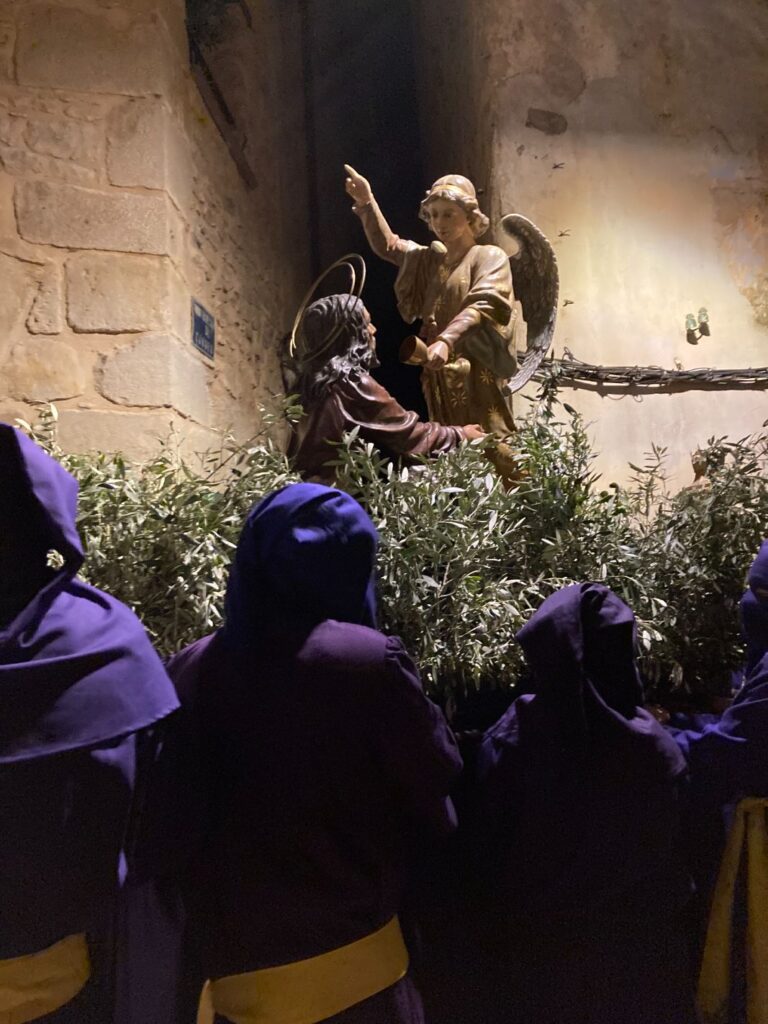
Cristo Crucificado (Crucifixion): Purple with yellow hoods. Their statue shows Jesus on the cross. The group is quieter and more sombre, with girls carrying candles at the front.
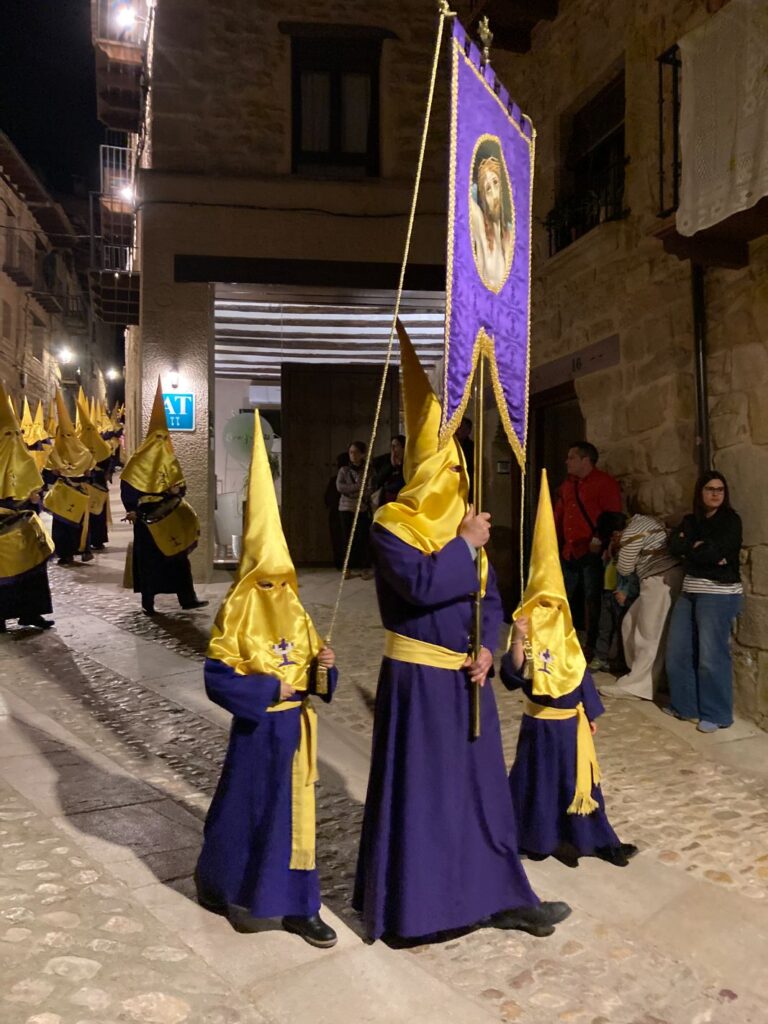

Nazarenos (Penitents): Purple with white cloaks and hoods. Some carry torches. The last person often walks barefoot – a sign of penance.


Soledad de la Virgen (Virgin of Sorrows): Black robes, white hoods, and a white sash. They carry a statue of Mary in mourning, sometimes with a spider-like symbol on their cloaks.
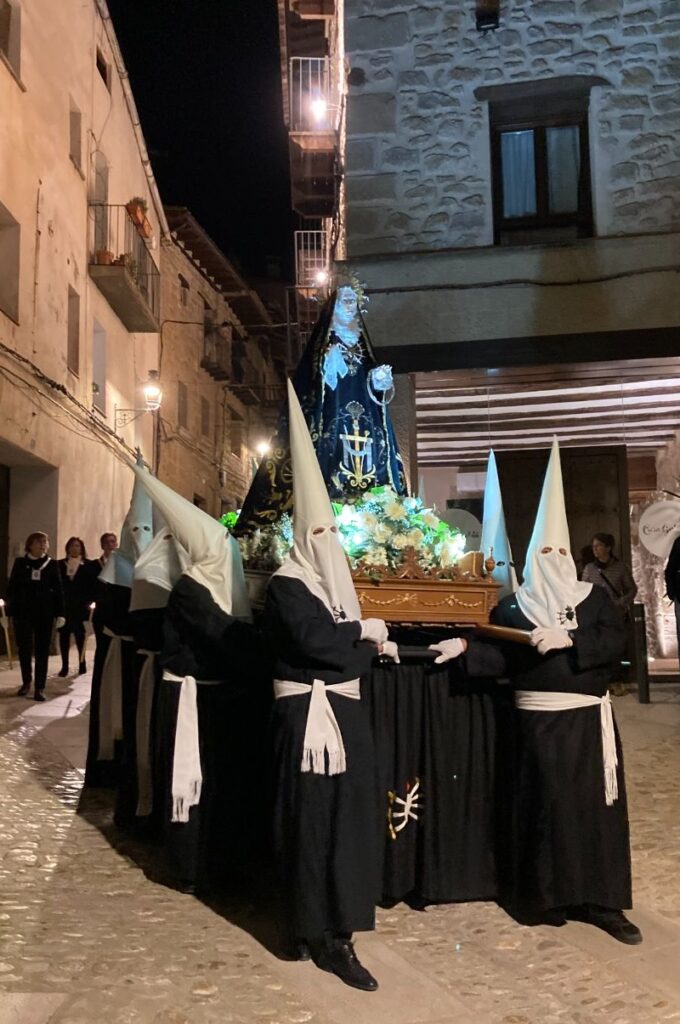
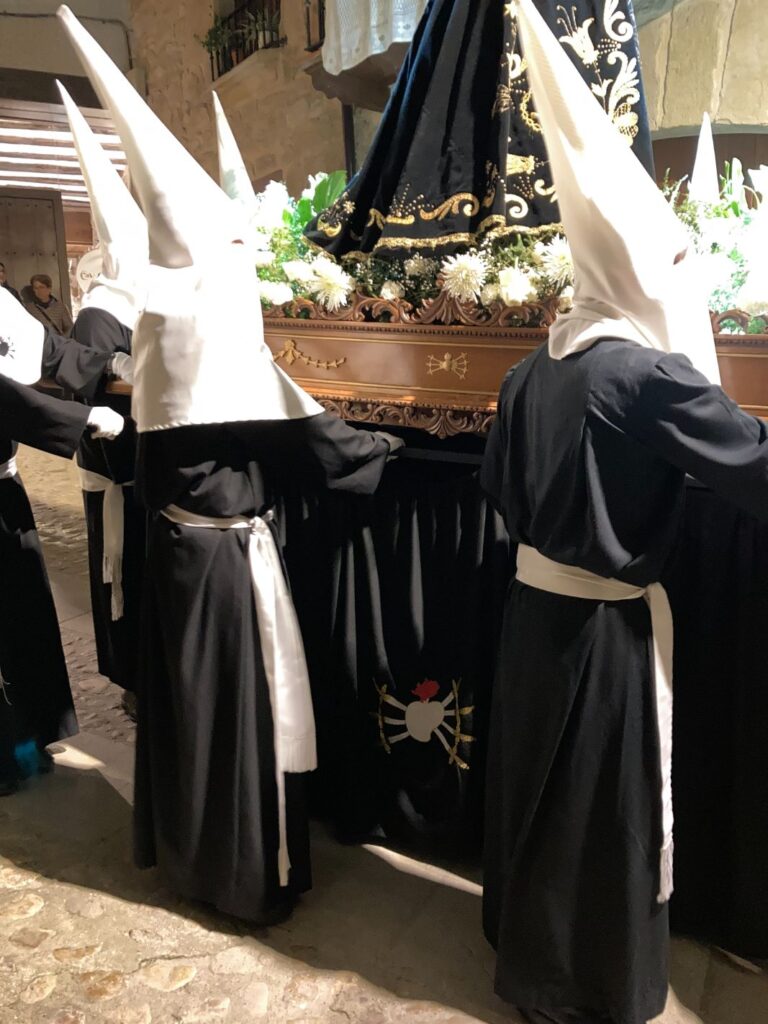
Manolas: Women in black without cloaks or hoods, walking with torches. They represent the women who accompanied Mary during the burial.
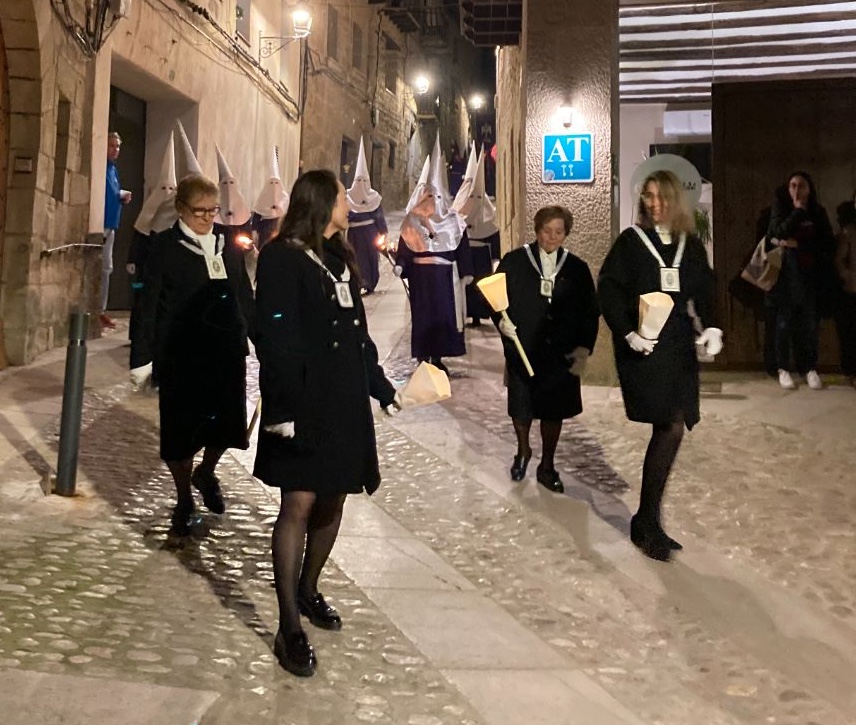
Santo Sepulcro (Holy Sepulchre): Purple with red hoods and sashes. They carry the statue of Jesus lying in the tomb, often led by cornets who play at key moments during the procession.
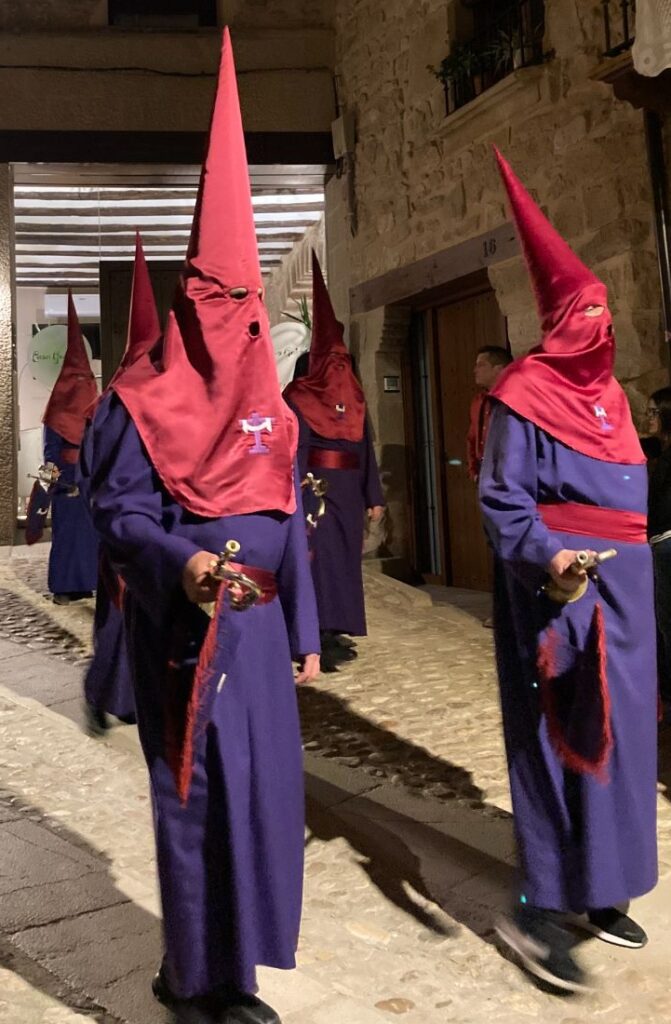

Even if you don’t recognise every symbol, you can sense the emotion and intention behind each group. Most people watching – and many participating – aren’t necessarily religious. But there’s a shared understanding of what the week represents.
More than religion
Semana Santa isn’t just a church thing; it’s not even just a “Spanish tradition” in the tourist-brochure sense. It’s something that brings together the whole community – toddlers with ear protectors, teenagers with drums, grandparents watching from folding chairs. The streets are lined with people who grew up here, people who moved here, visitors passing through. And for one week, everyone slows down and pays attention.
Even if you’re not drawn to the religious side of it, the atmosphere is worth experiencing. The silence before the rompida, the rhythm of the drums, the careful steps of the processions through narrow streets – it’s all part of a shared rhythm that’s been going for centuries.
Ever been part of these Semana Santa events? Or maybe you’re local to the area and you know something I don’t? Share your story below!


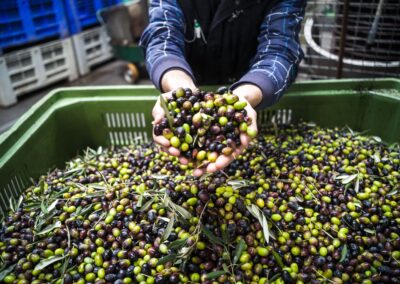
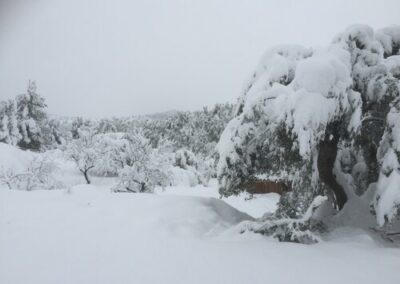
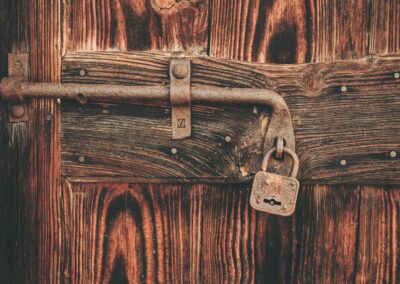

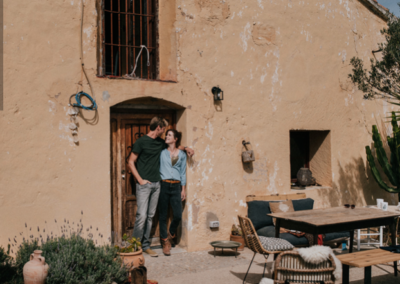
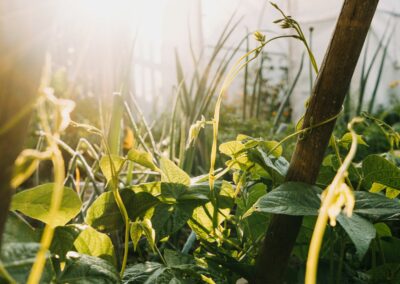
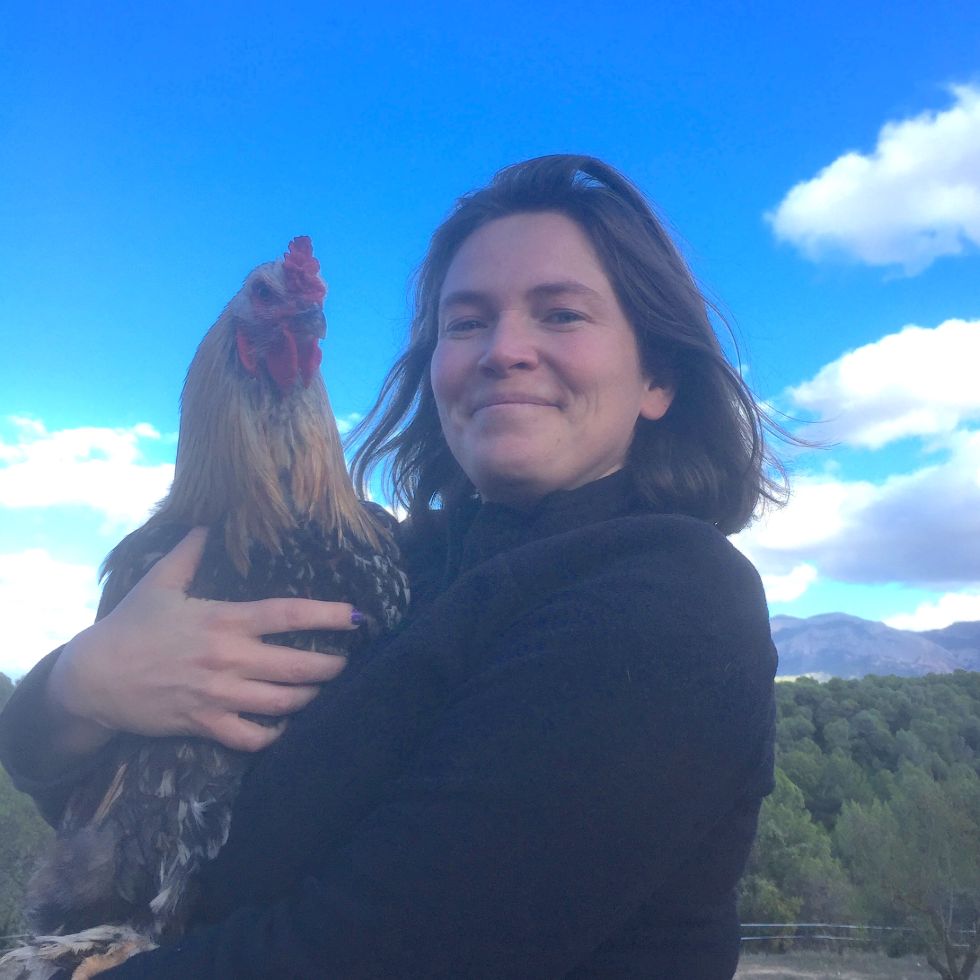
0 Comments